- MENU -
講演録目次

イヴォナ・コルディンスカ・ナブロッカ『『源氏物語』全巻をポーランド語に訳す』
編者:青山学院大学文学部日本文学科
企画:小松靖彦・大江元貴・山口一樹
B6判、76頁
文学通信、2025年2月28日
[目次]
はしがき―企画の趣旨と経緯(小松靖彦)
講師紹介(大江元貴)
『源氏物語』全巻をポーランド語に訳す(イヴォナ・コルディンスカ=ナヴロッカ)
Ⅰ はじめに
Ⅱ 『源氏物語』が世界文学史上傑出した作品だといえる理由
「傑作」の「内容」と「形式」/その国の文化全般への影響
Ⅲ インガルデンの「擬似判断説」の理論
文学的真理/「形而上学的な品質」の具体化/異文化間コミュニケーションの仲介者としての翻訳者
Ⅳ ポーランドにおける『源氏物語』
『源氏物語』に関するさまざまなイベント
Ⅴ 『源氏物語』全篇初のポーランド語訳のプロジェクトについて
Ⅵ 『源氏物語』のポーランド語訳の「方略と方法論」
翻訳方略/「翻訳」と「解釈」
Ⅶ 『源氏物語』の翻訳における基本的な問題点
1.人物の呼称/2.表現と語りの曖昧さと多義性/3.和歌/4.文化の違いカルチャーレムKulturem
Ⅷ むすびに
参考文献
コメント・質疑応答編
青山学院大学文学部日本文学科主催講演会「ポーランド語による初の『源氏物語』全巻訳について」を拝聴して(山本啓介)

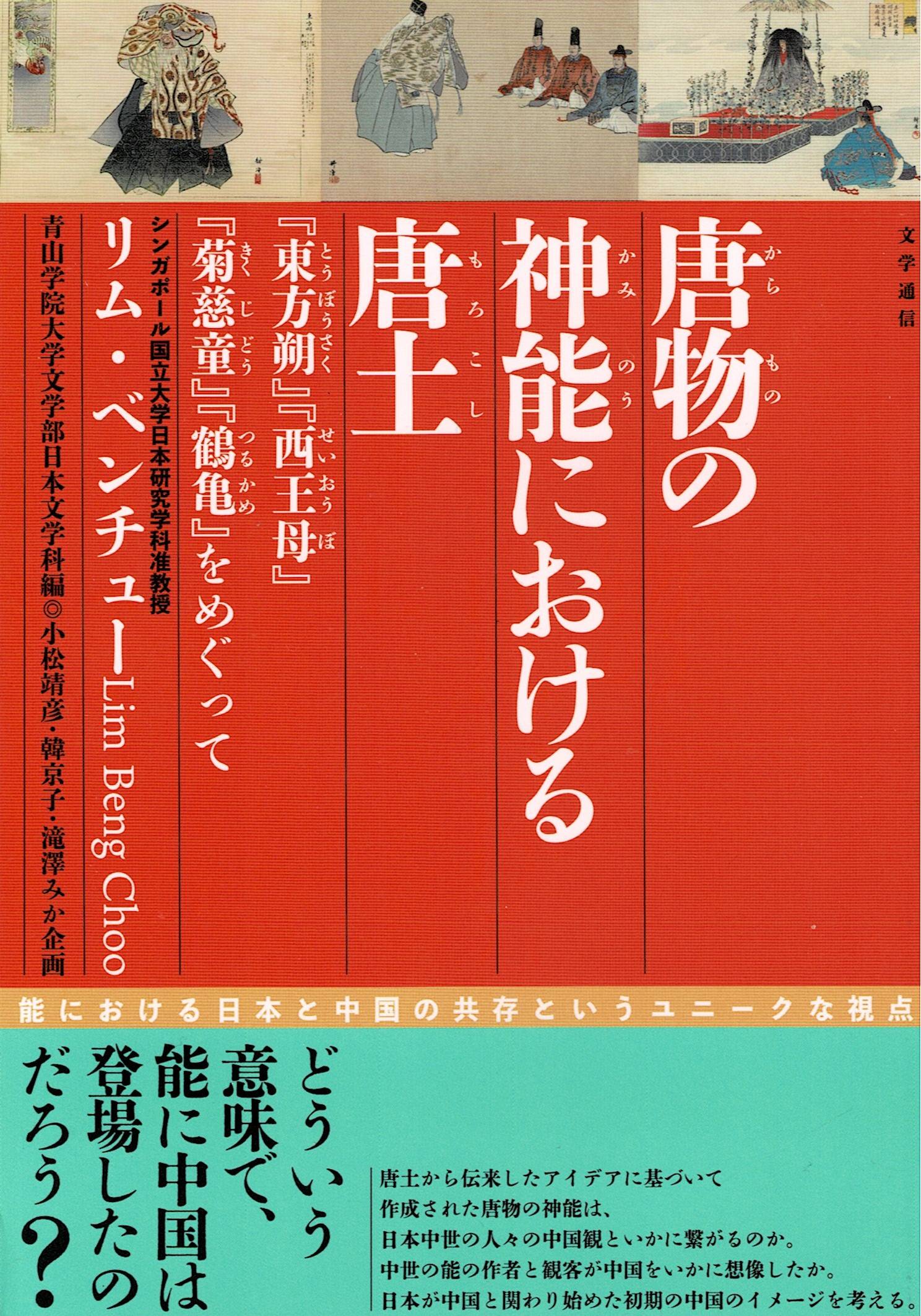
リム・ベンチュー『唐物の神能における唐土 『東方朔』『西王母』『菊慈童』『鶴亀』をめぐって』
編者:青山学院大学文学部日本文学科
企画:小松靖彦・韓京子・滝澤みか
B6判、64頁
文学通信、2024年3月31日
[目次]
はしがき(小松靖彦)
講師紹介(韓京子)
Ⅰ はじめに
Ⅱ 神能と唐物の神能
Ⅲ 作品分析
Ⅳ 終わりに
参考文献
講演を聴いて――コメントとレスポンス
■コメント(滝澤みか)
■会場からの質問への解答①
■会場からの質問への解答②
青山学院大学文学部日本文学科主催招聘講演「唐物の神能における中国のイメージ――『東方朔』『西王母』『菊慈童』『鶴亀』をめぐって」について(韓京子)

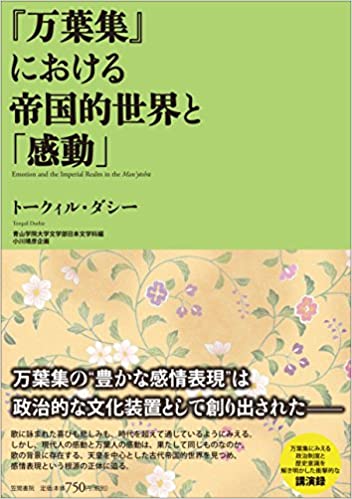
トークィル・ダシー『『万葉集』における帝国的世界と「感動」』
編者:青山学院大学文学部日本文学科
企画:小川靖彦
A5判、60頁
笠間書院、2017年3月31日
[目次]
Ⅰ はじめに
Ⅱ 『万葉集』の世界のありよう
Ⅲ 『万葉集』における「感動」の世界
Ⅳ おわりに
講演を聴いて―コメントとレスポンス(トークィル・ダシー×小川靖彦)……文学研究の基礎にある「感動」 /創られたものとしての〈感情〉 /枕詞の翻訳の難しさ /「帝国」ということばについて /古代と近代における〈天皇を中心とする世界〉 /『古今和歌集』をどう捉えるか /『万葉集』の「君」という呼称
■会場からの質問への回答……(1)『万葉集』の歌を英訳する時に、特に重視していることは何か。 (2)柿本人麻呂「泣血哀慟歌」と潘岳「悼亡詩」の違いは、帝国的世界と関係するのか。 (3)『万葉集』の歌に女性的な印象を受けたが、それはどこから生まれているのか。 (4)柿本人麻呂「泣血哀慟歌」の、死者が山中に居るという死生観をどう受け止めているか。
「泣血哀慟歌」全文(トークィル・ダシー英訳)


李愛淑『色彩から見た王朝文学 韓国『ハンジュンロク』と『源氏物語』の色』
編者:青山学院大学文学部日本文学科
企画:高田祐彦、小川靖彦
A5判、56ページ
笠間書院、2015年3月31日
[目次]
Ⅰ はじめに
Ⅱ 韓国の伝統色
Ⅲ 韓国の王朝文学
Ⅳ 『ハンジュンロク』とは
Ⅴ 『ハンジュンロク』と色
Ⅵ 『源氏物語』の白衣
講演を聴いて―コメントとレスポンス
■コメント(高田祐彦)……東アジアの伝統色と王朝文学 /『ハンジュンロク』と日本古典文学 /『源氏物語』の白一色の世界 /二つの質問
■レスポンス(李愛淑)……感覚的色彩意識 /韓国・日本を通じての「王朝の色彩」 /韓国の〈白〉・日本の〈白〉
■会場からの質問への回答…(1)韓国では青はどのように考えられているのか (2)韓国では鮮やかな色彩で表現することについての法的規制はあったのか

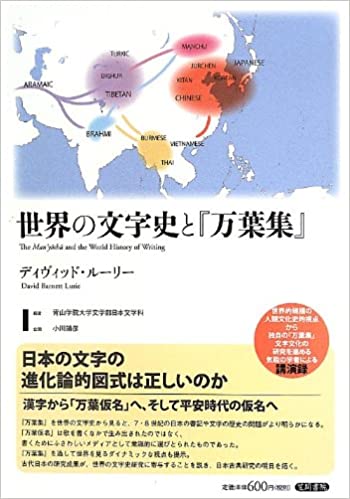
ディヴィッド・ルーリー『世界の文字史と『万葉集』』
編者:青山学院大学文学部日本文学科
企画:小川靖彦
A5判、64頁
笠間書院、2013年3月31日
[目次]
Ⅰ はじめに
Ⅱ 世界の文字史の伝統的な史観における〈表語〉と〈表音〉の関係
Ⅲ 表音への〈進化〉とその〈干渉〉という概念が日本に当てはめられる
Ⅳ 『万葉集』と世界の文字史
Ⅴ おわりに
講演を聴いて―コメントとレスポンス
■コメント(小川靖彦)……講演から想起されたこと―日本語の文字の諸相 /研究史における講演の位置 /三つの質問
■レスポンス(ディヴィッド・ルーリー)……西洋と東洋では反対方向となる文字の神話化 /書く行為と読む行為のさまざまなバランス /文字を使ったパフォーマンス
■会場からの質問への回答……(1)①韓国・朝鮮語のハングルのように制定者が明らかな場合には文字は神話化しないのか ②現代韓国語が漢字でなく、表音文字のハングルを使っていることをどう考えるか (2)資料①ⓐⓑのように同じ歌が別の巻に重複して掲載されているのは、編集ミスによるものか (3)『万葉集』の表音文字主体の歌と表語文字主体の歌とでは、英訳する際に違いはあるのか

教科書
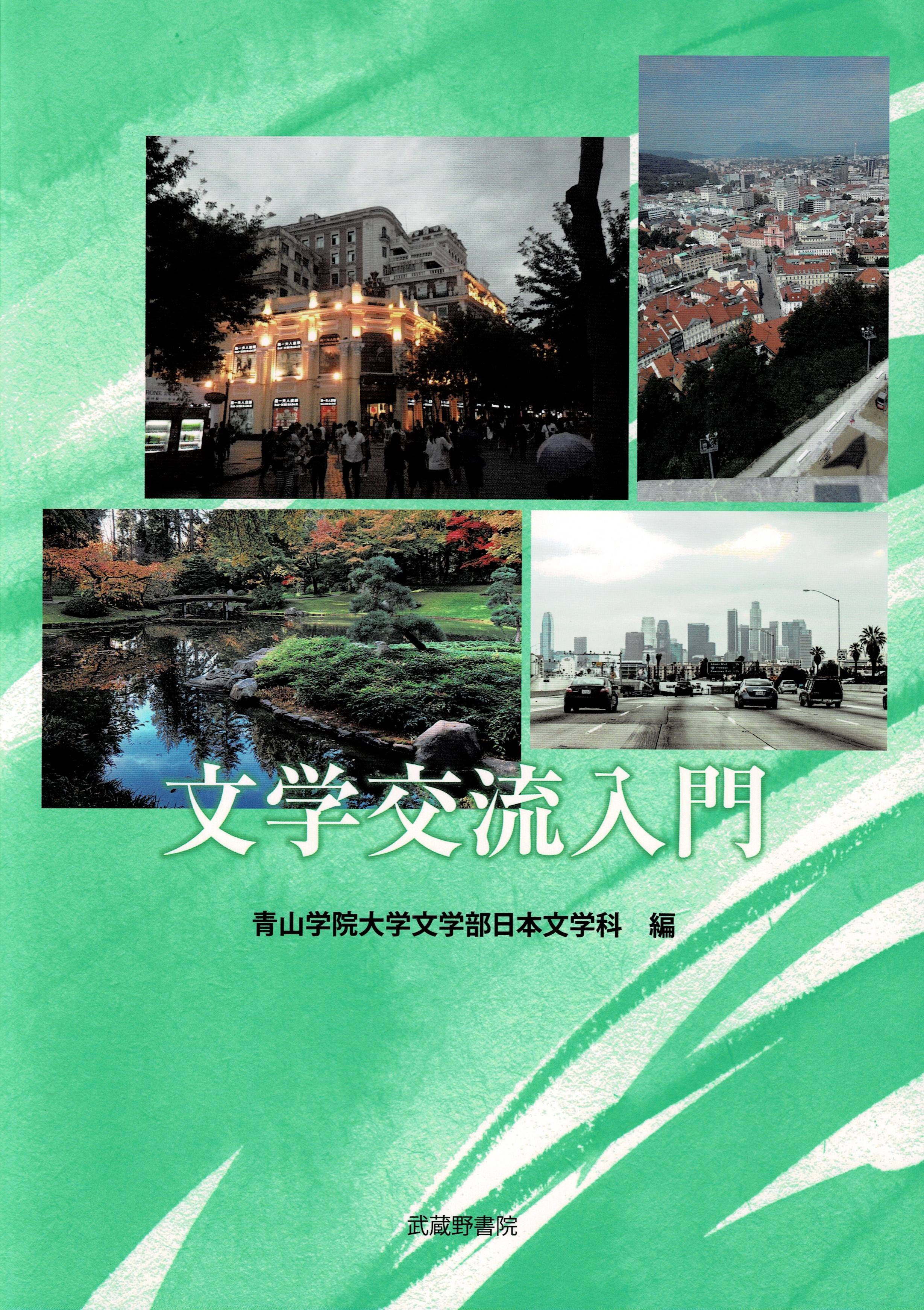
『文学交流入門』
編者:青山学院大学文学部日本文学科
A4判、128頁
武蔵野書院、2023年9月1日
[目次]
はしがき─この本を読む人のために(小松靖彦)
Ⅰ 〈文学交流〉とは何か
〈文学交流〉という視点 (小松靖彦)
〈文学交流〉の理論(西野入篤男)
─column─ グローバリゼーションとグローカリゼーション(梅田径)
Ⅱ 〈文学交流〉の歴史
奈良時代〔6~8世紀〕の〈文学交流〉(小松靖彦)
平安時代〔9~12世紀〕の〈文学交流〉(小松靖彦)
中世〔13~16世紀〕の〈文学交流〉(小松靖彦)
近世〔17、18世紀〕の〈文学交流〉(韓京子)
近代〔19、20世紀前半〕の〈文学交流〉⑴(小松靖彦)
近代〔19、20世紀前半〕の〈文学交流〉⑵(韓京子)
Ⅲ 翻訳という〈文学交流〉
翻訳の理論(ローレン・ウォーラー)
海外から日本へ(緑川眞知子)
日本から海外へ(常田槙子)
翻訳文学とコンテクスト(グレゴリー・ケズナジャット)
Ⅳ 〈文学交流〉に生きた近代の文学者たち
ラビンドラナート・タゴール〔1861-1941 インド〕(新田杏奈)
エイミー・ローウェル〔1874-1925 アメリカ合衆国〕(小松靖彦)
アデレイド・クラプシー〔1878-1914 アメリカ合衆国〕(小松靖彦)
魯迅〔1881-1936 中国〕(吉田薫)
周作人〔1885-1967 中国〕(吉田薫)
謝六逸〔1898-1945 中国〕(西野入篤男)
ケネス・レクスロス〔1905-82 アメリカ合衆国〕(小松靖彦)
─column─ スレチュコ・コソヴェル〔1904-26 スロベニア〕(小松靖彦)
─column─ 植民地朝鮮から青山学院に留学した詩人たち (小松靖彦)
Ⅴ 〈文学交流〉の広がり
〈文学交流〉としての神話(沖田瑞穂)
アジアの説話交流(韓京子)
日本と中央アジアの伝承の類似(ハルミルザエヴァ・サイダ)
インド僧・菩提遷那の〈文学交流〉─天平文化と『南天竺婆羅門僧正碑并序』(藏中しのぶ)
─column─ たましいのありか─古今東西における壺の象徴性(山崎藍)
─column─ 『平家物語』と『シャー・ナーメ』に関する比較研究の状況(滝澤みか)
Ⅵ 日本と諸地域の〈文学交流〉
世界の中の日本語・日本文学(田中祐輔)
日本と中国の東北地方─「満州」時代の知識人及び東北地域の日本語教育(林忠鵬)
日本と上海─日中の文学者の対面交流(徐静波)
日本と台湾─「帝国」の狭間にあって(孫世偉)
日本と太平洋地域─日本統治時代に始まった交流の光と影(河路由佳)
日本とインド─宮沢賢治とロビンドロナト・タゴールの活動と貢献 (ギータ・A・キニ)
─column─ 親日トルコと日本の〈文学交流〉(アイシェヌール・テキメン)
─column─ 日本文学とラテンアメリカ文学の交流(マヌエル・アスアヘアラモ)
日本とカリフォルニア─強制収容所と海紅俳句(トークィル・ダシー)
日本とカナダ─日本とカナダの古典文学(クリスティーナ・ラフィン)
日本とフランス─レオン・ド・ロニーと『詩歌撰葉』(常田槙子)
日本とドイツ─エルヴィン・フォン・ベルツのことなど(杉山和也)
日本とスロベニア─民族のエネルギーと普遍性(守時なぎさ)
─column─ ミロシュ・ツルニャンスキーと『日本の古歌』〔セルビア〕(山崎佳代子)
─column─ ポーランドと日本との〈文学交流〉 (イヴォナ・コルジンスカ=ナブロツカ)
─column─ 日本とウクライナ(江川裕之)
Ⅶ 〈文学交流〉を学ぶために
日本文学研究のための中国語(孫世偉)
日本文学研究のための英語─世界との対話のための英語による日本文学研究(セン・ラージ・ラキ)
あとがき(小松靖彦)

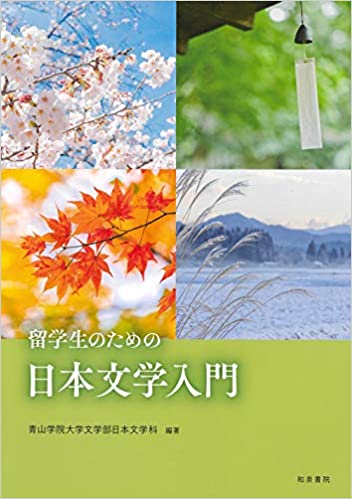
『留学生のための日本文学入門』
編者:青山学院大学文学部日本文学科
A4判、104頁
和泉書院、2021年3月30日
[目次]
日本文学への招待
日本の文字
コラム:戦後日本と国字
日本語の歴史
コラム:歴史的仮名遣いの読み方
日本語の特徴
コラム:方言
コラム:漢文訓読
コラム:日本の書
日本文学の種類Ⅰ(和歌・連歌・俳句)
日本文学の種類Ⅱ(漢詩・新体詩)
日本文学の種類Ⅲ(神話・説話・歴史文学)
日本文学の種類Ⅳ(物語・近世小説)
日本文学の種類Ⅴ(芸能、能狂言・浄瑠璃・歌舞伎)
日本の歴史と文学Ⅰ(上代・中古)
日本の歴史と文学Ⅱ(中世・近世)
日本の歴史と文学Ⅲ(近・現代)
コラム:漢文訓読体の文学
コラム・翻訳語・翻訳文学
日本人の一生
日本人の宗教
日本の民家の暮し
日本の伝統的建物
コラム:歳時記
日本の庭
日本の季節と行事Ⅰ(1月から6月まで)
日本の季節と行事Ⅱ(7月から12月まで)
日本の民話・日本の遊び
日本の音楽
日本の絵画
「百人一首」を楽しもう
(付録)古文を読むために―古典文法の学び方―
日本古典文学史略年表

書籍
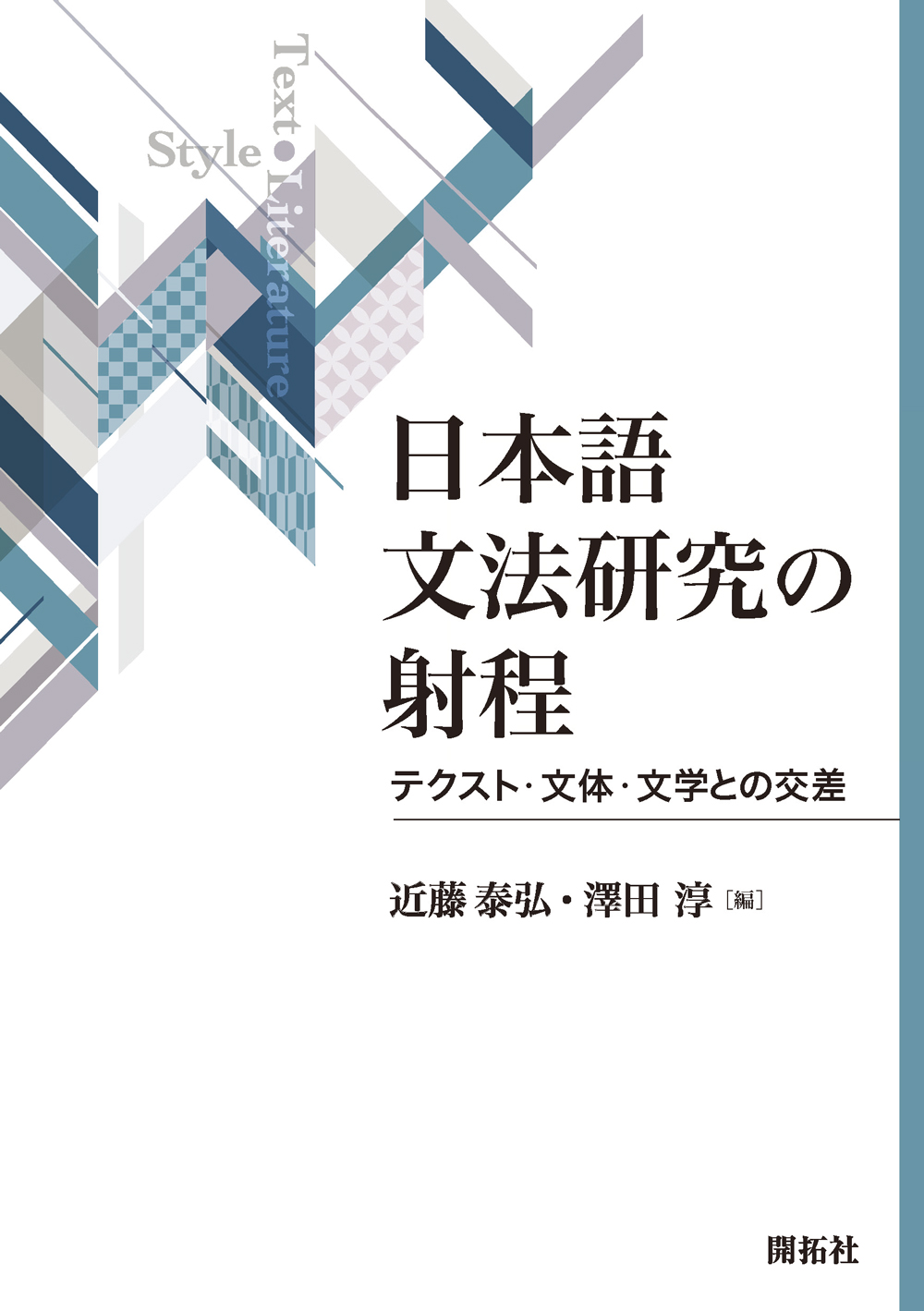
『日本語文法研究の射程―テクスト・文体・文学との交差―』
近藤泰弘・澤田淳編
2025年12月 開拓社
[内容](出版社HPより)
文法とテクスト・文体・文学の交差に光を当て、日本語文法研究の新たな展開を探る論集。第Ⅰ部では、日本語の文体・ジャンルの特徴と類型を提示する。第Ⅱ部では、文法と文体・ジャンルの相互作用に注目し、豊かな文法記述のあり方を示す。第Ⅲ部では、文法変化の舞台を捉えるべく、文法史と文体・ジャンル・資料の関係に注目する。第Ⅳ部では、文学テクストを視点・翻訳・話体の観点から文法的に読み解く。
[目次]
第I部 日本語の文体・ジャンルの特徴と類型―文法的文体論のアプローチ―
日本語文の分類―文ベクトルの分析から―(近藤泰弘)
探索的因子分析による日本語文体の抽出(中俣尚己)
文法から見たテクストジャンルの文体論的整理(森山卓郎)
第II部 文法と文体・ジャンルの相互作用―豊かな文法記述を目指して―
構文とジャンル特性(天野みどり)
「のだ」文の構造と説明的意味の実現(大木一夫)
「勧め」を表すモダリティ表現の普通体と丁寧体をめぐって―「しよう」と「しましょう」、「 しないか?」と「しませんか?」―(前田直子)
X(Twitter)に現れる「見出し的」無助詞提題文―ジャンルに枠づけられる文法―(大江元貴)
第III部 文法史と文体・ジャンル・資料―文法変化の〈舞台〉を捉える―
動作を表さない「スル」―歴史的観点から―(青木博史)
日本語における「理由の説明」の歴史(北﨑勇帆)
書き言葉テキストにおけるラレ構文の展開―主催から非情主語受身へ―(志波彩子)
変体漢文における格標示の方法と実態(田中草大)
第IV部 文法と文学テクスト―視点・翻訳・話体との関わりから―
敬語から見る日本語の物語の文体とその歴史―敬語の加除と視点の切り替えの相関現象に注目して―(澤田淳)
源氏物語の英訳における「ム」の訳出―ウェイリー訳とサイデンスティッカー訳を例に―(林淳子)
話体研究と翻訳、および文法について―村上春樹小説作品を出発点として―(金水敏)

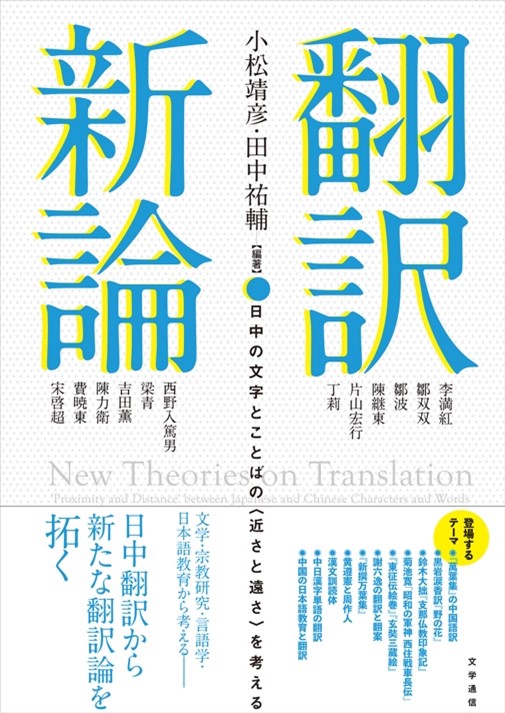
『翻訳新論 日中の文字とことばの〈近さと遠さ〉を考える』
小松靖彦・田中祐輔編著
2025年5月 文学通信
[目次]
はじめに
第1部 漢字文学の翻訳学―『萬葉集』の翻訳をめぐって
第1章 還流する『萬葉集』――謝六逸の中国語訳を通して(小松靖彦)
第2章 謝六逸による万葉長歌の中国語訳の方法(李満紅)
第3章 銭稲孫の『万葉集』翻訳と出版(鄒双双)
第2部 土着化と相互理解/誤解の翻訳学―受容の様態
第1章 近代翻訳小説の受容とメディア――黒岩涙香訳『野の花』と中国(鄒波)
第2章 中国仏教へのまなざし――鈴木大拙の二種の『支那仏教印象記』(陳継東)
第3章 日中戦争と菊池寛――「昭和の軍神 西住戦車長伝」を中心として(片山宏行)
第3部 相互補完の翻訳学―中国高僧の伝記絵巻・『新撰万葉集』
第1章 絵巻と翻訳――古代日本の絵巻に見る「漢・和・絵」の往還と創造力(丁莉)
第2章 日本古典研究者としての謝六逸から考える「翻訳・翻案」研究の方向性(西野入篤男)
第3章 『新撰万葉集』の和歌漢訳―詩と歌の交流(梁青)
第4部 会話・文体の翻訳学―筆談と漢文訓読の行方
第1章 筆談からことばの世界へ──黄遵憲の「風物詩」と周作人の「文字的趣味」の邂逅(吉田薫)
第2章 文体の翻訳学─―漢文訓読体について(陳力衛)
第5部 漢字・漢語をめぐる翻訳学
第1章 中日漢字単語の翻訳過程(費暁東・宋啓超)
第2章 中国における日本語教育と翻訳──日本の文学作品と「訳す」人材の育成(田中祐輔)
おわりに
執筆者プロフィール

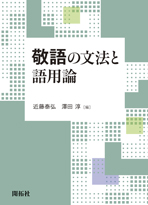
『敬語の文法と語用論』
近藤泰弘・澤田淳編
2022年3月 開拓社
[内容]
2019年9月に日本文学科が主催した国際シンポジウム「敬語とは何か―敬語表現の諸相―」を基礎とし、現在の敬語研究の代表的研究者による包括的な論集。第I部「敬語の文法」、第II部「敬語の語用論」、第III部「敬語とポライトネス」の3部からなり、現代語、古典語、方言、トルコ語や中国語との対応など、最新の敬語研究を展開する。
[目次]
第I部 敬語の文法―敬語の理論と分類―
敬語から見た日本語の種類―ダイクシスからの考察―(近藤泰弘)
『敬語の指針』についての覚書と、もう一つの敬語分類案(菊地康人)
なぜいま敬語は「5分類」になったのか?―日本人の敬語意識に起こっていること―(滝浦真人)
古典敬語の特質と関係規定語の問題(小田勝)
第II部 敬語の語用論―敬語運用の歴史と地域差―
日本語敬語の運用に関する語用論的研究―相対敬語の類型化をもとに―(澤田淳)
10世紀末『落窪物語』における下位への対面素材敬語―発話場面の文脈との関わりから―(森山由紀子)
近世後期洒落本の「受益型」行為指示表現―地域差と現代語との差異―(森勇太)
昔話談話にみる待遇表現の地域差(日高水穂)
第III部 敬語とポライトネス―対人配慮と言語対照―
ポライトネスとキャラクター(金水敏)
ポライトネスと膠着語―日本語とトルコ語をめぐって―(テキメン・アイシェヌール)
行為要求表現の形式と意味―日本語と中国語の場合―(井上優)

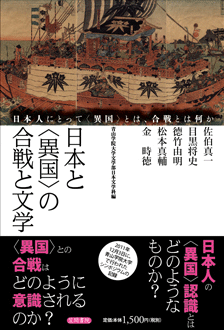
『日本と〈異国〉の合戦と文学―日本人にとって「異国」とは、合戦とは何か』
青山学院大学文学部日本文学科編
2012年10月 笠間書院
[目次]
第1部 趣旨説明
日本人にとって「異国」とは、合戦とは何か(佐伯真一)
第2部 シンポジウム
琉球侵略の歴史叙述―日本の対外意識と「薩琉軍記」(目黒将史)
敗将の異域渡航伝承を巡って―朝夷名義秀・源義経を中心に(徳竹由明)
古代・中世における仮想敵国としての新羅(松本真輔)
太閤記・朝鮮軍記物の近代―活字化・近代太閤記・再興記(金時徳)
第3部 討議

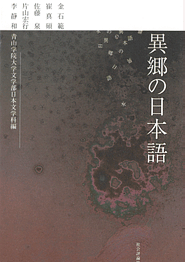
『異郷の日本語』
青山学院大学文学部日本文学科編
2009年4月 社会評論社
[目次]
第1部 文学的想像力と普遍性(金石範)
第2部 シンポジウム・もうひとつの日本語
「ことばの呪縛」と闘う―翻訳、芝居、そして文学(崔真碩)
いかんともしがたい植民地の経験―森崎和江の日本語(佐藤泉)
菊池寛の朝鮮(片山宏行)
討論 李静和(司会)・佐藤泉・金石範・片山宏行・崔真碩
解説 非場所の日本語―朝鮮・台湾・金石範の済州(佐藤泉)
あとがき

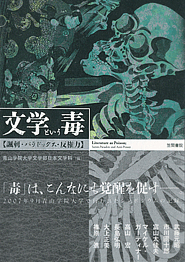
『文学という毒―諷刺・パラドックス・反権力』
青山学院大学文学部日本文学科編
2009年4月 笠間書院
[目次]
よみがえる外連―はじめに(篠原進)
第1部 対談
歌舞伎の毒と悪をめぐって(武藤元昭×市川團十郎)
第2部 シンポジウム
ガリヴァー旅行記および当時の政治諷刺(富山太佳夫)
ミュリエル・スパークのユーモア(マイケル・ガーディナー)
パラドックスの毒(高山宏)
秋成小説の毒(長島弘明)
中国古典文学の「言志」と“毒”(大上正美)
浮世草子の“毒”と奇想(篠原進)
第3部 討議

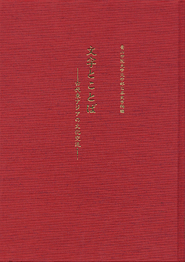
『文字とことば ―古代東アジアの文化交流―』
2005年5月 在庫に関しては日本文学科研究室にお問い合わせください。
[目次]
はじめに
和文成立の背景(矢嶋泉)
古代東アジアの国際環境(佐藤信)
韓国の古代吏読文の文末助辞「之」について(南豊鉉)
文字の交流――片仮名の起源(小林芳規)
古代日本の漢字文の源流――稲荷山鉄剣の「七月中」をめぐって(安田尚道)
萬葉集の文字法(小川靖彦)
かな文字の創出――『竹取物語』の成立と享受に関する若干の覚書(高田祐彦)
あとがき

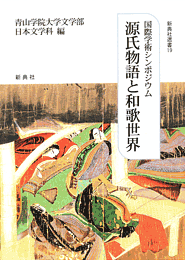
『源氏物語と和歌世界』
青山学院大学文学部日本学科編
2006年9月 新典社
[目次]
はじめに(高田祐彦)
シンポジウム報告
物語作中歌の位相(土方洋一)
「袖ふれし人」は薫か匂宮か――手習巻の浮舟の歌をめぐって(藤原克巳)
夕顔、詩歌、絵画――創作的読みの力(ハルオ・シラネ)
饗宴の楽しみ――討議と展望(高田祐彦)
「源氏物語と和歌世界」に寄せて
『源氏物語』における代作の方法(高木和子)
歌と黙読の音声―『源氏物語』と本居宣長の“あや”(立石和弘)
あとがき(土方洋一)

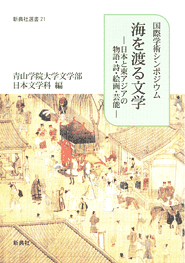
『海を渡る文学』
青山学院大学文学部日本学科編
2007年8月 新典社
[目次]
はじめに(佐伯真一)
報告 日本から東アジアへ
日本中世文学研究の内外――『平家物語』と東アジア(佐伯真一)
詩の物語・絵の物語――中国絵巻「胡笳十八拍図」をめぐって(楊暁捷)
四方四季と『浄瑠璃物語』――『春香伝』と『金鰲新話』から考える(邊恩田)
肖像画・賛からみた禅の日中交流(村井章介)
討論 東アジアから日本へ
討論1――大上正美コメント
討論2――藤原良章コメント
討論3――フロアの質問
あとがき(廣木一人)
